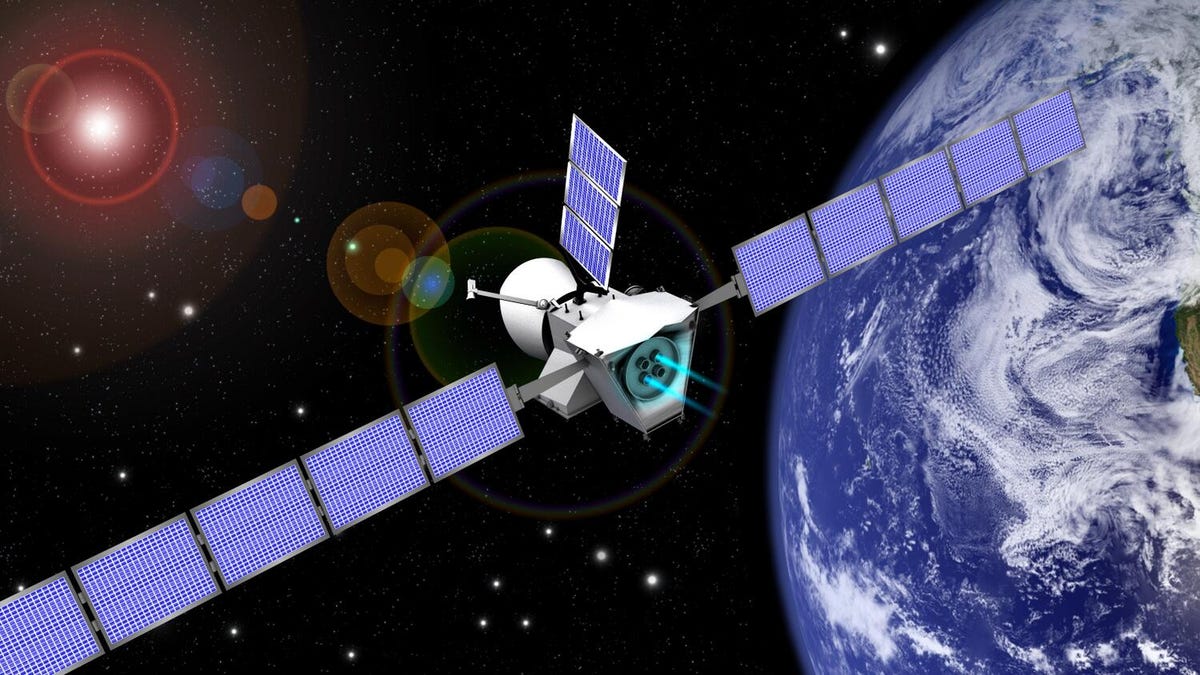Mercury-bound spacecraft should be visible from Earth during April flyby
ESA's BepiColombo launched in 2018 and will zip past the planet to say goodbye.

This illustration shows BepiColombo near Earth.
The European Space Agency has scaled back some of its science efforts during the coronavirus crisis, but it has one key mission that simply can't wait. BepiColombo, a dual-spacecraft mission to Mercury, is set to perform a critical close flyby of Earth on the evening of April 9 in the US (the morning of April 10 in Europe).
BepiColombo, a joint project from ESA and Japan's space agency JAXA, launched in late 2018 and is scheduled to reach Mercury in 2025. The flyby will use our planet's gravitational pull to put the spacecraft on the proper path for its long journey to the innermost planet in our solar system.
Some lucky Earthlings in the southern hemisphere may be able to spot BepiColombo using binoculars, telescopes and cameras. You can input your location details on the BepiColombo Italian Outreach website to calculate the spacecraft's brightness and visibility. ESA's Earth Flyby site offers more details and tips for spotting BepiColombo.
"This is the last time we will see BepiColombo from Earth," said Joe Zender, the mission's deputy project scientist, in an ESA statement on Monday. The spacecraft's closest approach will happen around 9:25 p.m. PT on April 9.
A small crew will guide and monitor the operation from ESA's mission control in Germany while observing social-distancing rules due to COVID-19. The flyby will also be used to test some of spacecraft's science instruments.
BepiColombo's nifty selfie cameras should be able to capture some scenic views during the flyby so everyone on Earth can participate in the adventure.
We have a long wait ahead before BepiColombo reaches Mercury, but scientists hope it will answer lingering questions about the mysterious planet's geology and environment.

